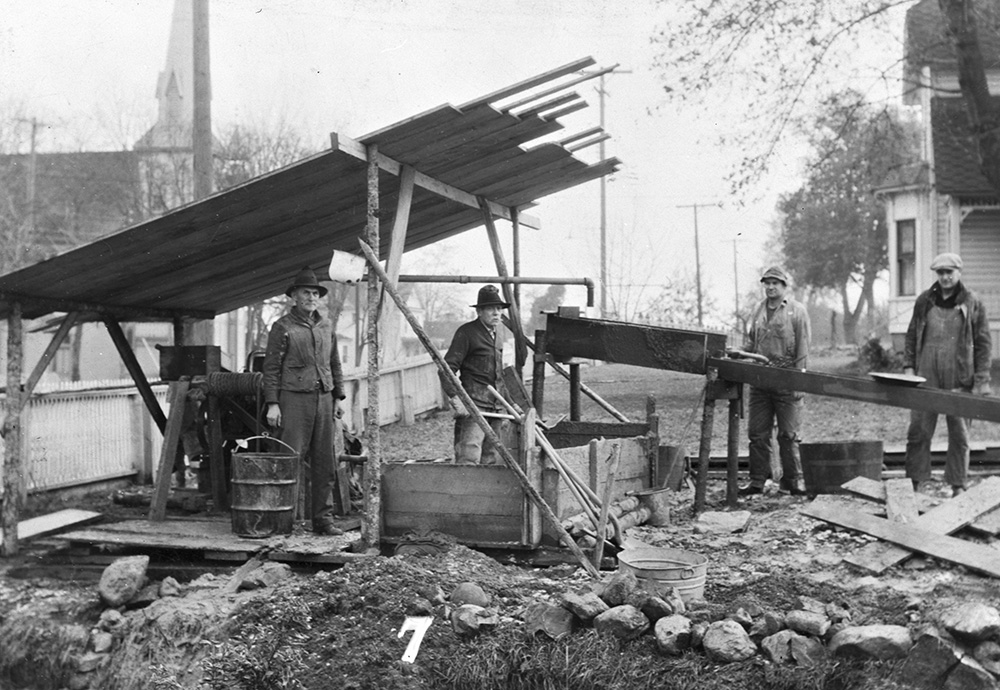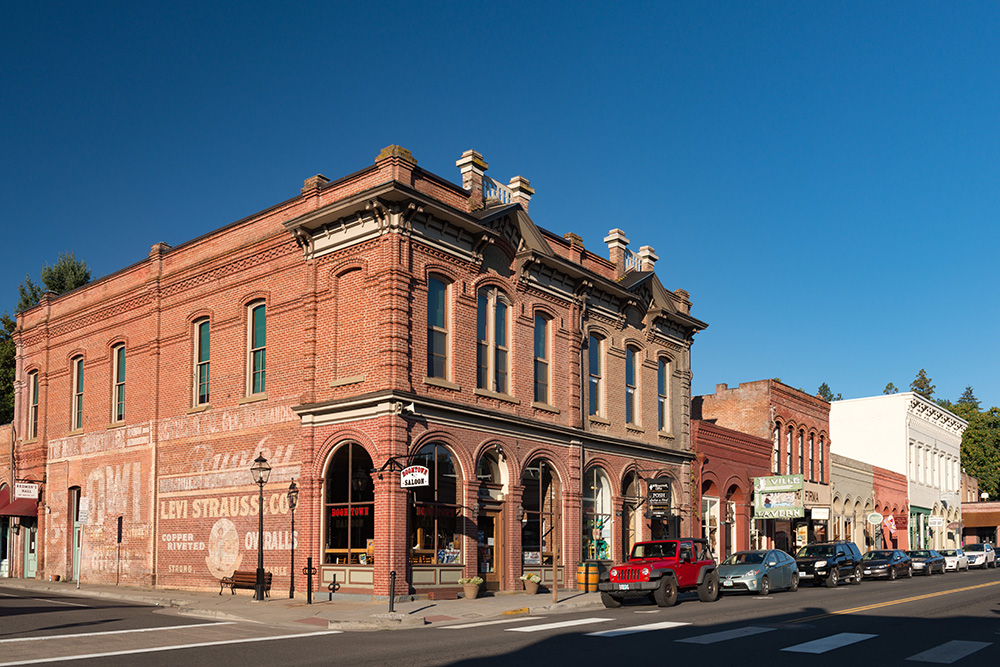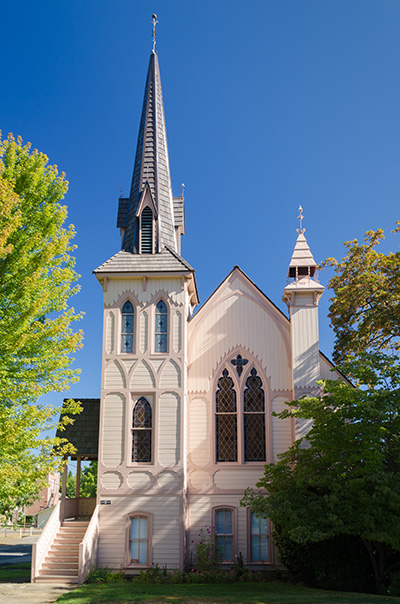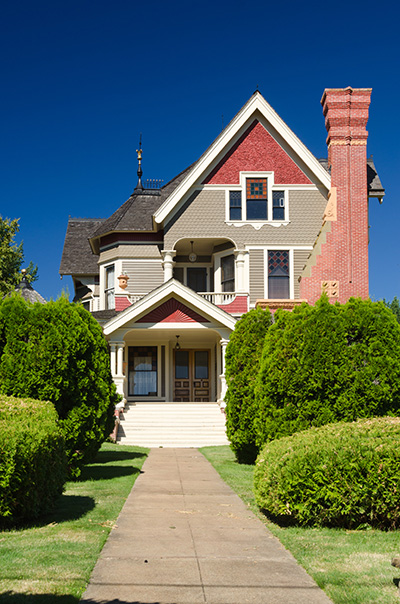
 Backyard mining in Jacksonville in the 1930s. (Courtesy of Oregon Historical Society) Enlarge Image
Backyard mining in Jacksonville in the 1930s. (Courtesy of Oregon Historical Society) Enlarge Image
With a population of nearly 3,000 people, many dispute Jacksonville as being a “true” ghost town. The city nearly disappeared after the 1800s. Jacksonville’s story is not one of total disaster, but of a town which lived, nearly died, and then returned to life.
The city emerged as a small but important mining camp in the southern mountains during the 1800s. Gold was discovered nearby, and Jacksonville became a regional hub for the industry. In 1852, the Oregon Territorial Legislature created Jackson County, and named the young town as the county seat. It was already a vital zone of business and politics in the southern territory. This new title only cemented the town’s rising status. Immigrants arrived in droves from the United States and around the world. Jacksonville had a sizeable number of Chinese gold miners, and boasted one of Oregon’s earliest Chinatowns.
In the early days of statehood, no trains steamed through the region. People and goods arrived on foot, on horseback, or by stagecoach. Gold moved out of this hinterland through C.C. Beekman of Wells Fargo, and the owner of southern Oregon’s only bank. Beekman sent gold shipments over the lonely stage route that linked Jacksonville with Sacramento and Portland. The Civil War also broke out this decade, and though Oregon was a Union state, Jacksonville was home to Confederate sympathizers. A great many Jackson County residents hailed from southern states such as Kentucky and Missouri. Most of the town also voted Democrat, were partial to Jacksonian style democracy and favored states’ rights over federal rule.
 Downtown Jacksonville. (Oregon State Archives, 2014) Get a high resolution copy of this building in the Oregon Scenic Images collection.
Downtown Jacksonville. (Oregon State Archives, 2014) Get a high resolution copy of this building in the Oregon Scenic Images collection.
After the war, Jacksonville began its slow decline as gold began running out in the 1870s. As rails began connecting Oregon to the rest of the country, Jacksonville looked forward to the arrival of the Oregon and California Railroad. Residents invested in new homes and businesses. They even constructed a new county courthouse. The line finally reached the Rogue Valley in 1883, but in a great upset the railroad bypassed the town. Jacksonville’s officials believed that the railroad could not survive without the town. With this mind they declined to purchase a right-of-way or to donate toward building expenses. Instead, the railroad laid track to the east at Medford.
As Medford waxed, Jacksonville’s wealth and power waned. The old gold town’s fate was sealed after Medford was renamed the new seat of Jackson County. The town’s slowing economy had a side-effect of preserving dozens of historic structures. With little investment, many of the town’s original buildings are still intact - like a time capsule from the 1880s.
In the 1900s, residents took advantage of their unique town. Downtown Jacksonville was designated as a national historic district in 1966. Now, more than 50 years later, Jacksonville is thriving again. The city is a growing center for tourism, arts, and culture in southern Oregon. It boasts a yearly music festival and several historic museums.
More Jacksonville Photos

The Jacksonville Presbyterian Church. (Oregon State Archives, 2014)

The historic Nunan House in Jacksonville. (Oregon State Archives, 2014)
Next:
Sumpter >